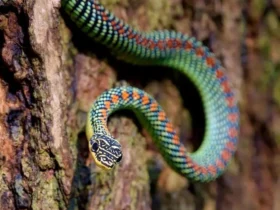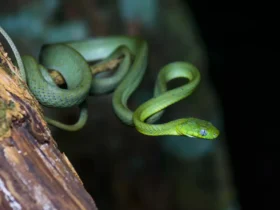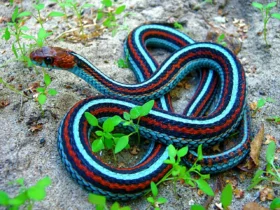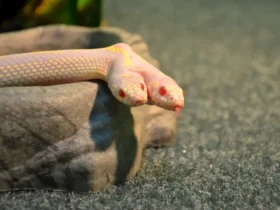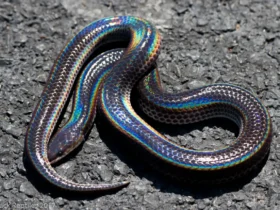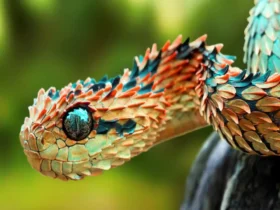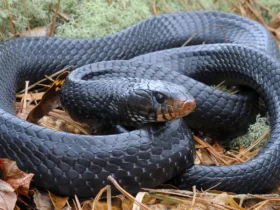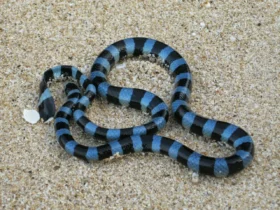The Banded Krait (Bungarus fasciatus) is a strikingly beautiful and venomous snake found in the Indian subcontinent and parts of Southeast Asia. With its distinctive bands and potent venom, this elusive serpent has captivated the curiosity of nature enthusiasts and herpetologists alike. In this article, we delve into the intriguing world of the Banded Krait, exploring its physical characteristics, habitat, behavior, and unique adaptations.
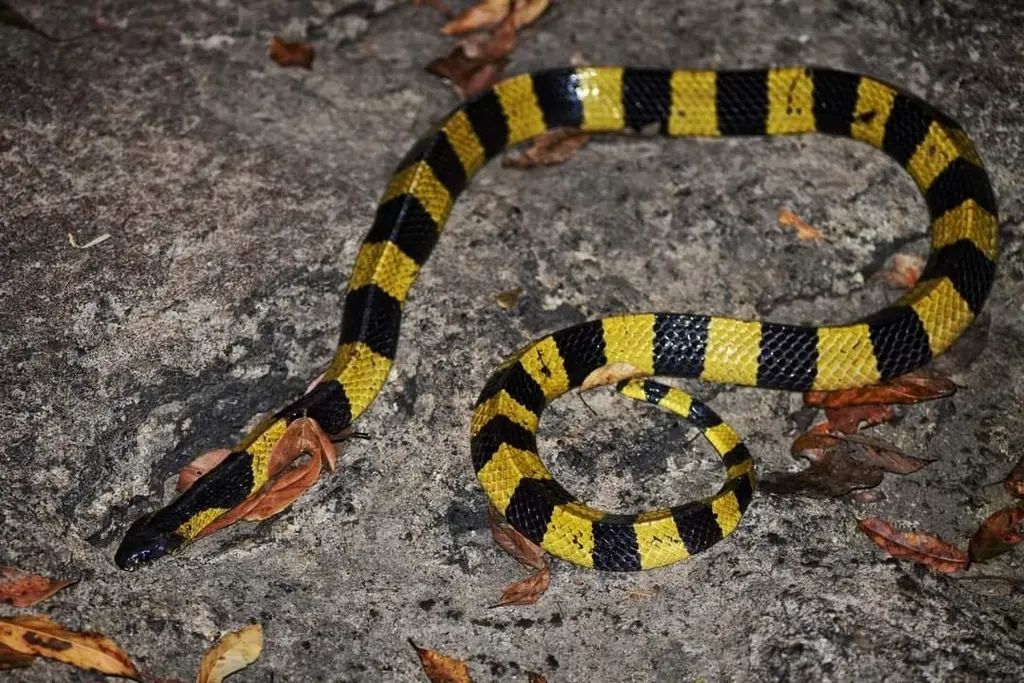
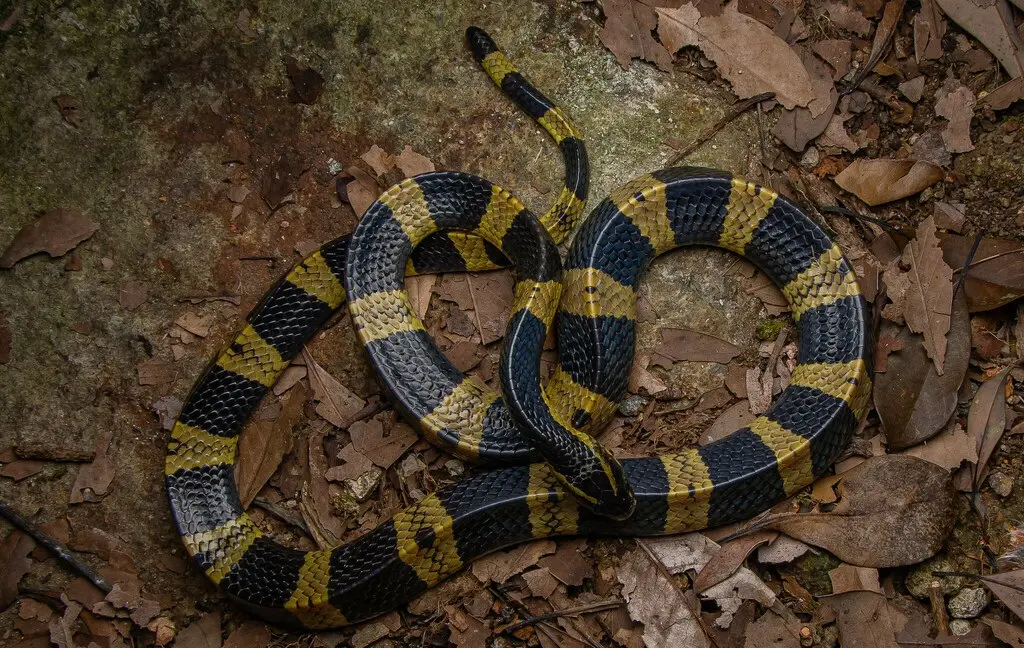
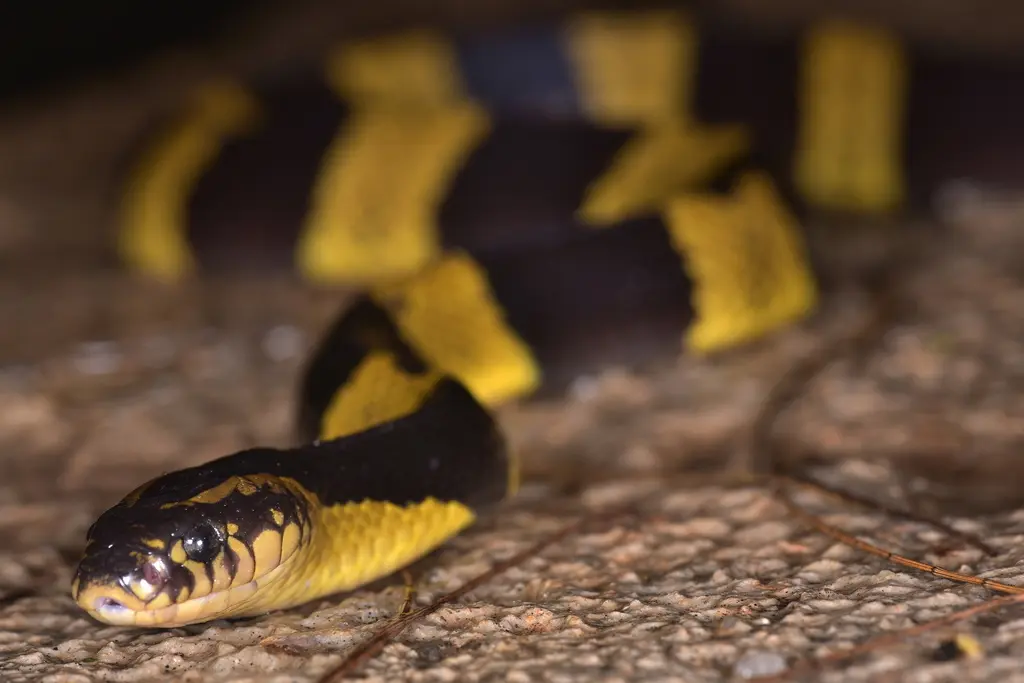
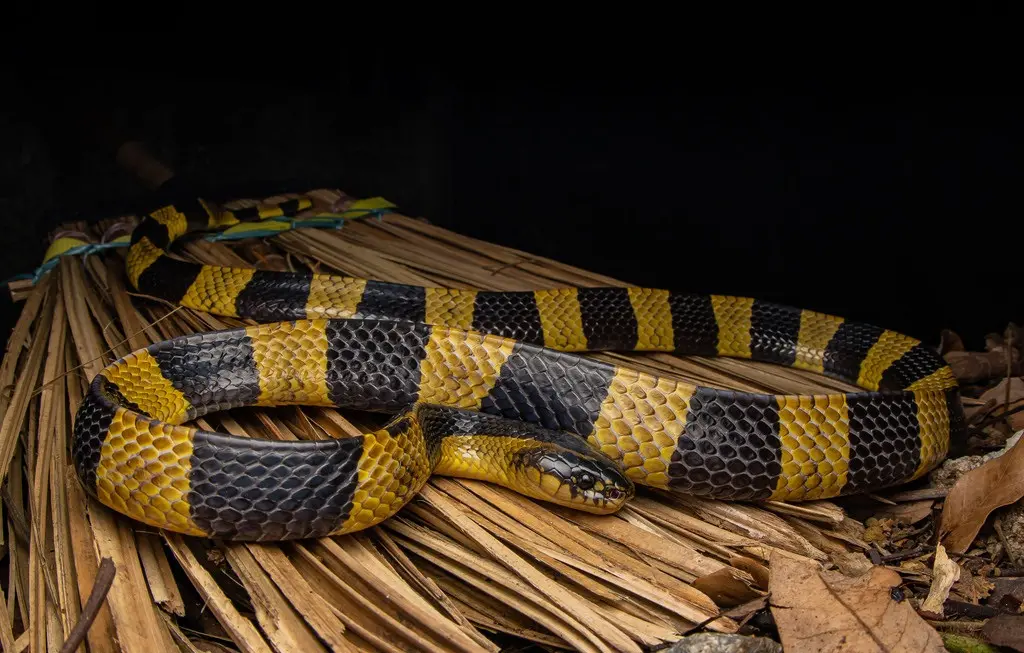
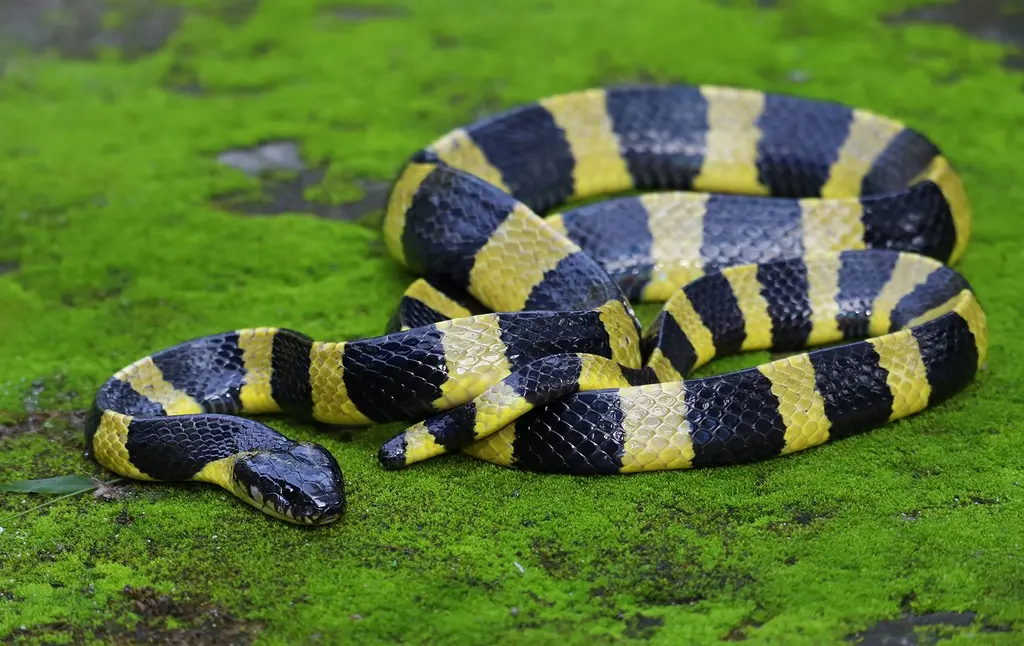
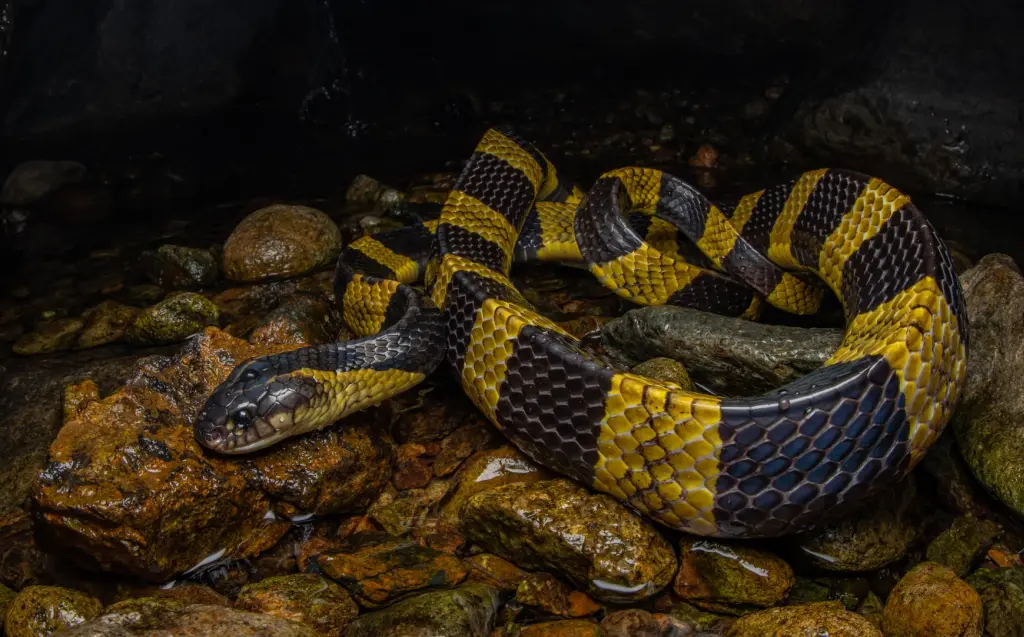
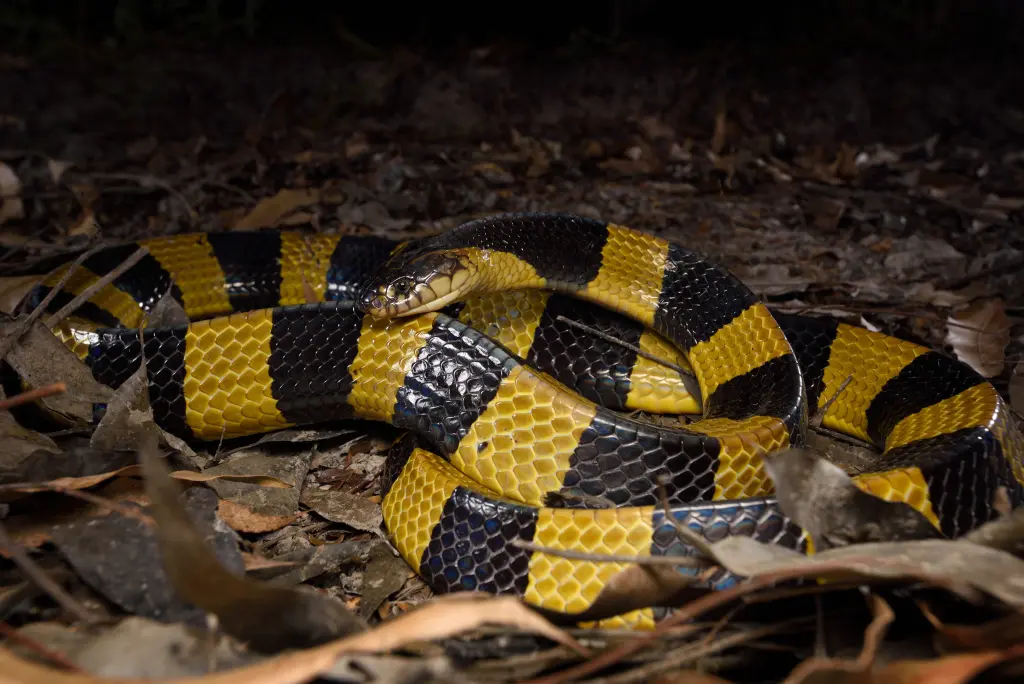
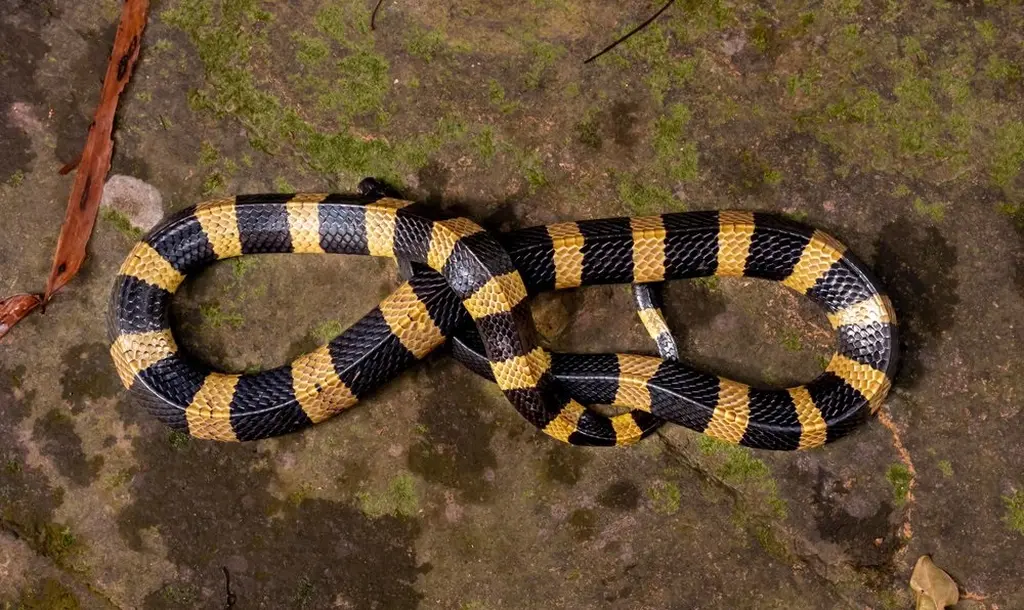
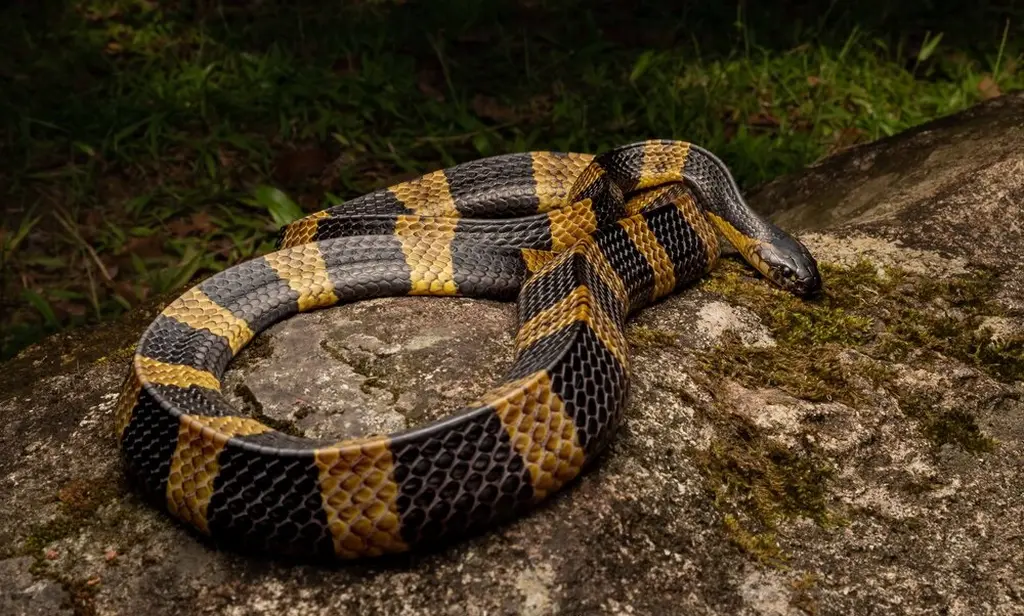
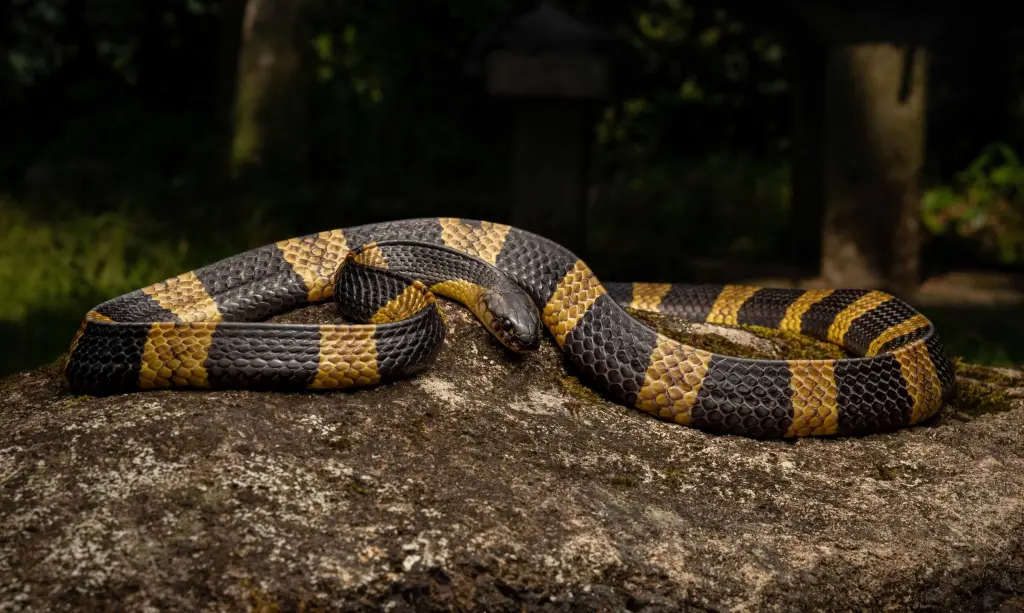
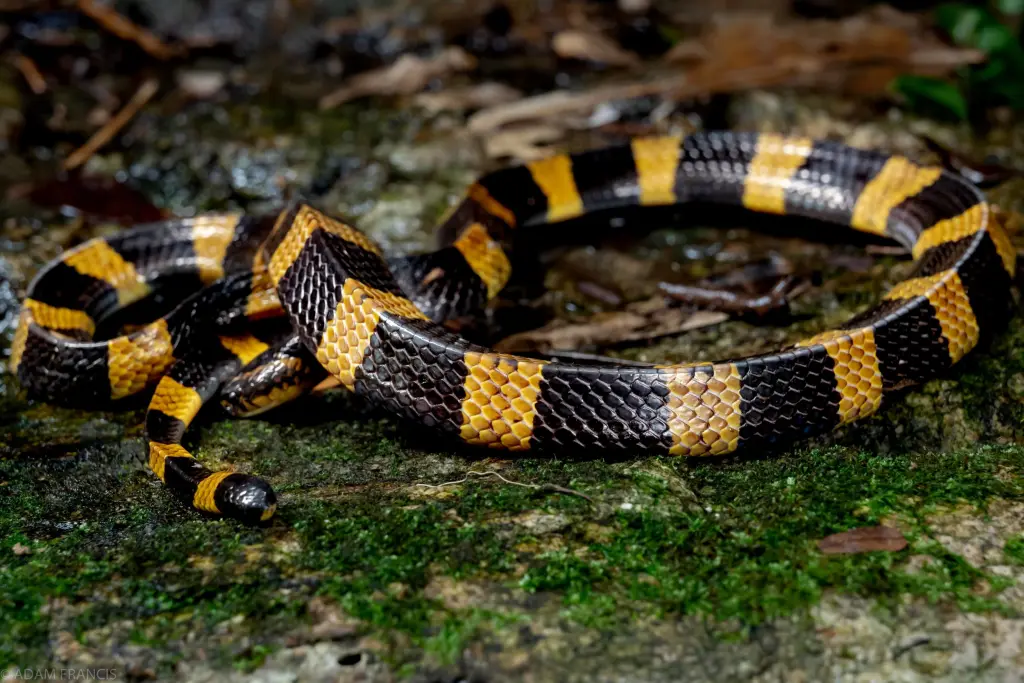
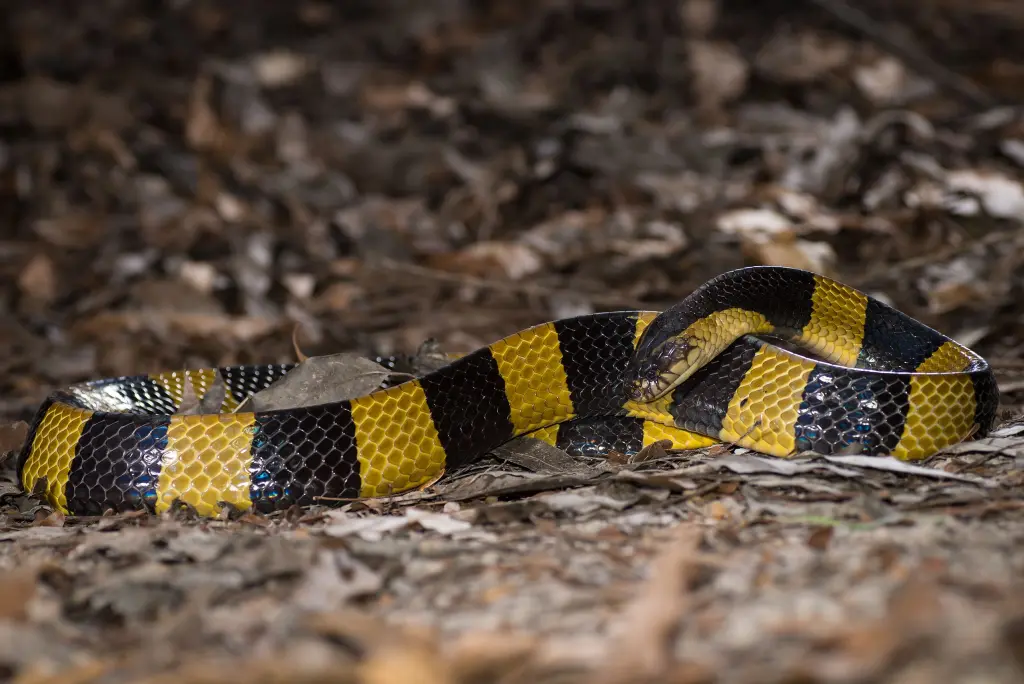
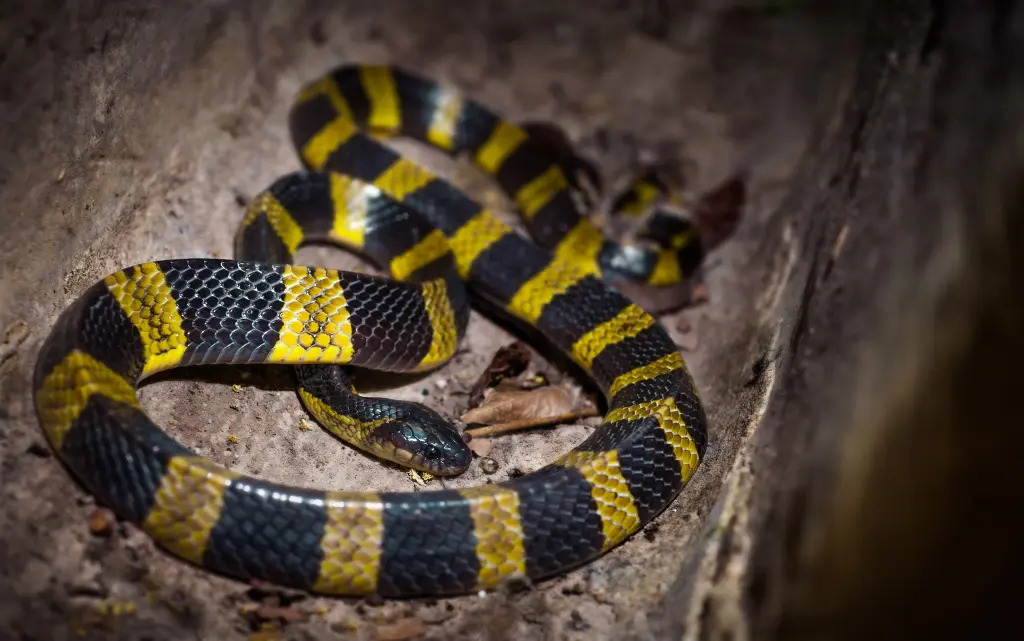
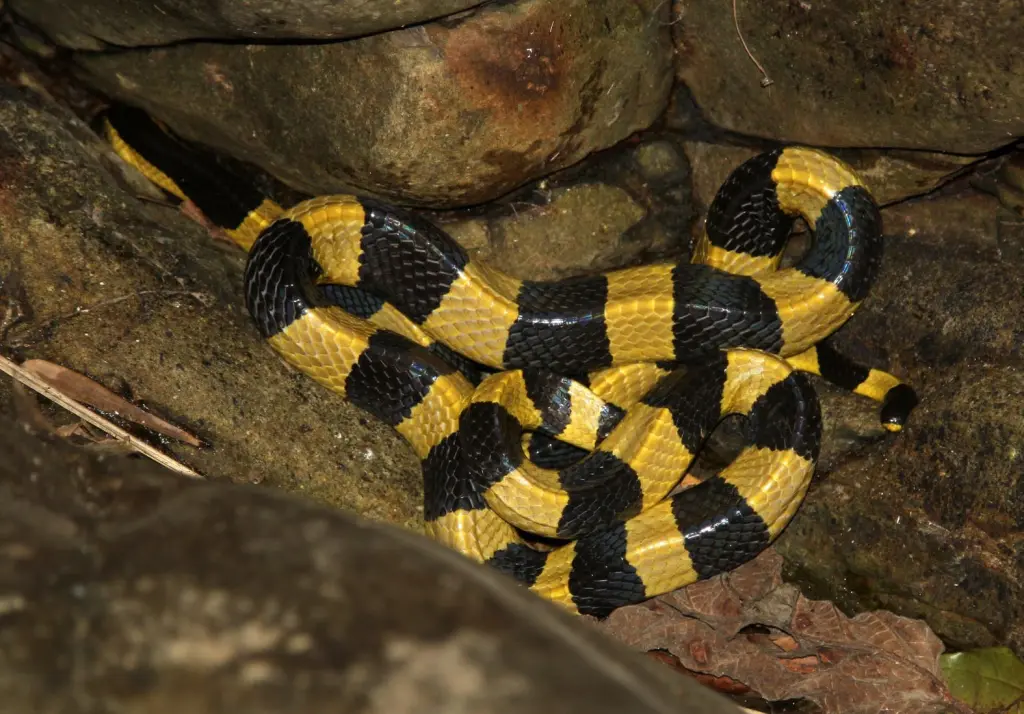

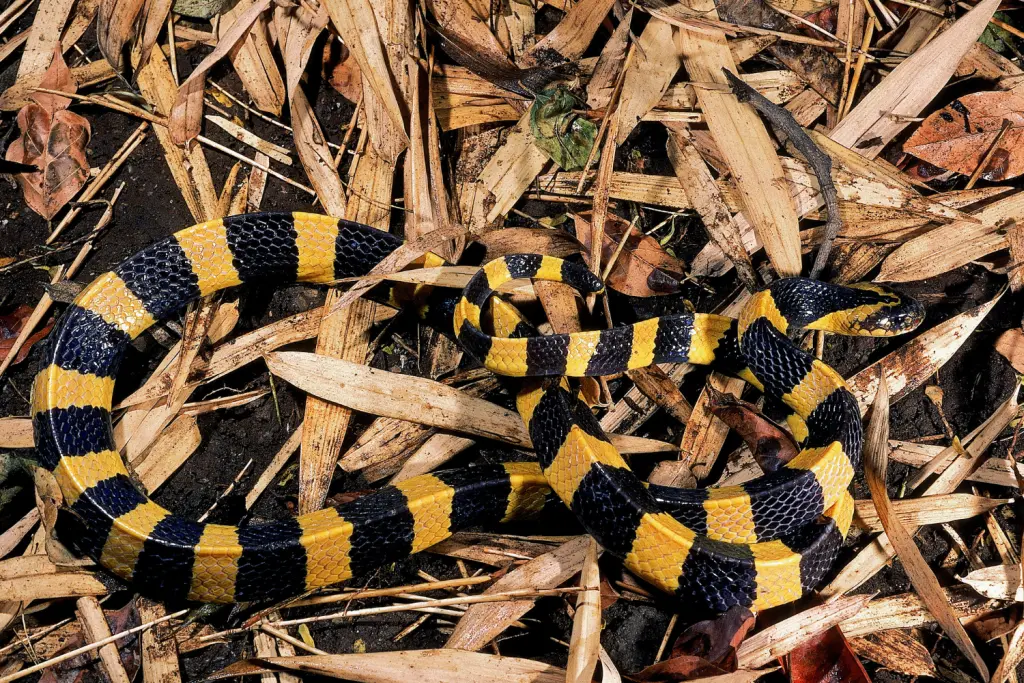
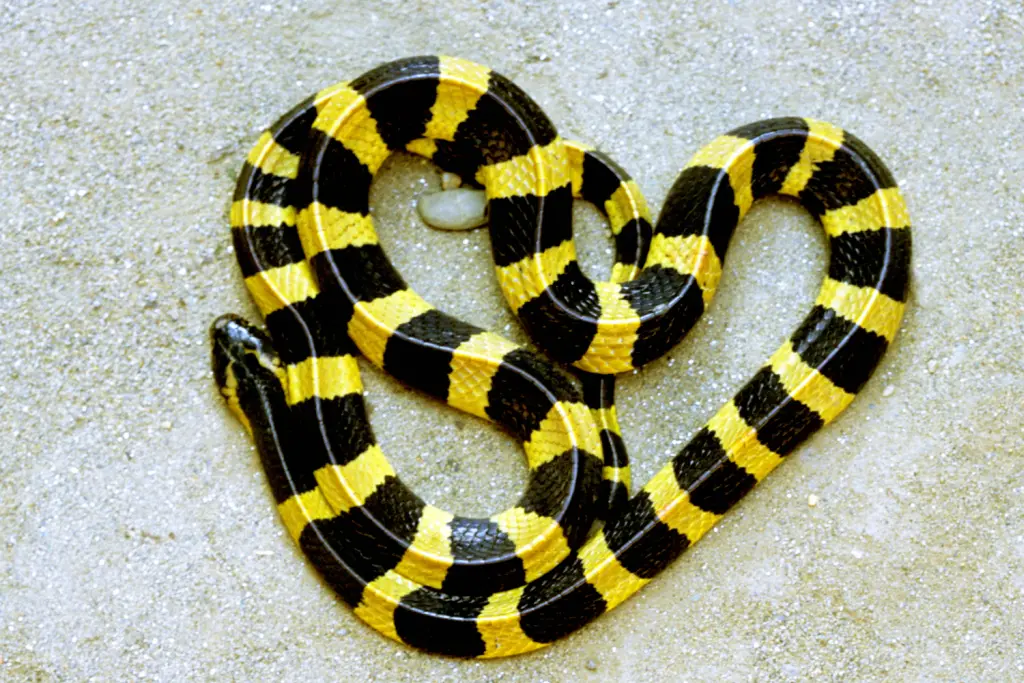
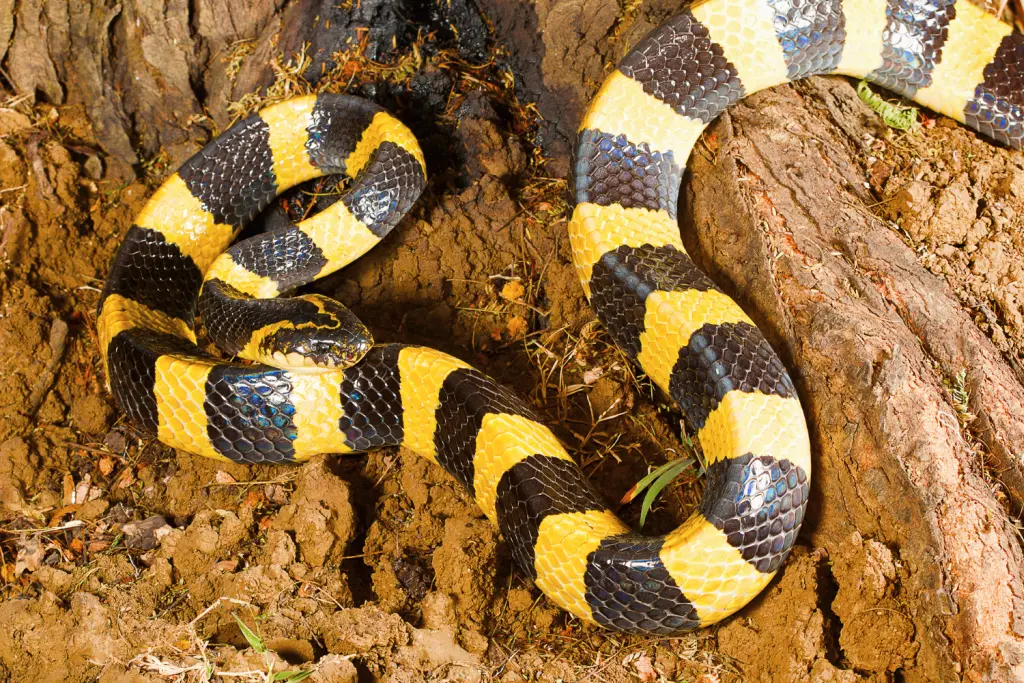
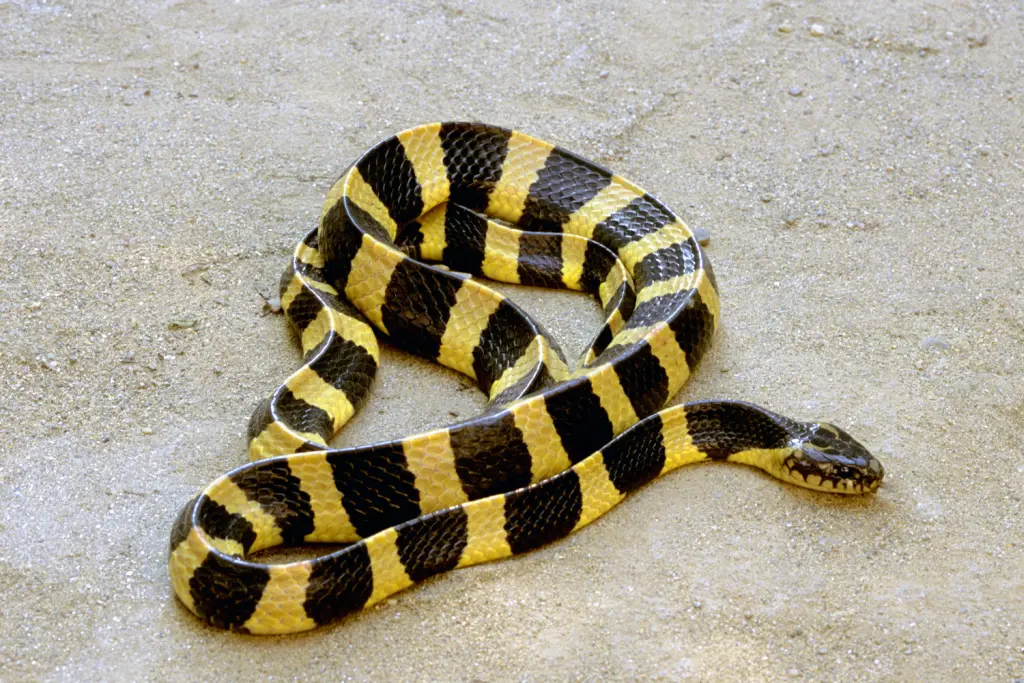

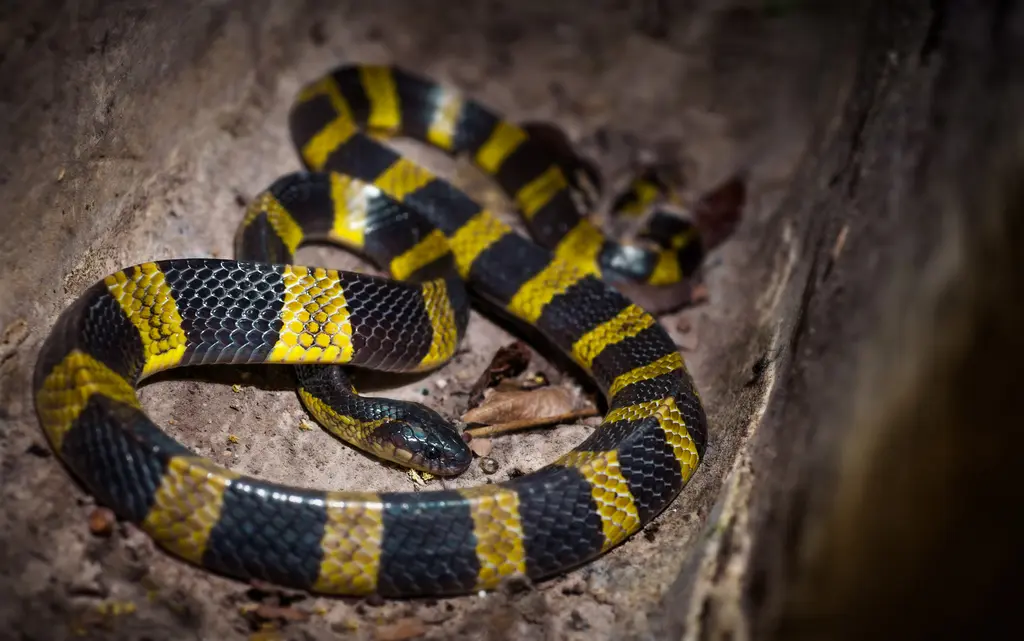
Physical Characteristics
The Banded Krait is a slender snake that typically grows between 1.2 to 1.8 meters in length, though some specimens may exceed 2 meters. Its most distinguishing feature is its vibrant coloration—a glossy black body adorned with bold bands of yellow or white. These bands run across the entire length of the snake, creating an eye-catching contrast that serves as a warning to potential predators.
Habitat and Distribution
The Banded Krait is primarily found in the Indian subcontinent, including India, Nepal, Bangladesh, and Sri Lanka. It also inhabits parts of Southeast Asia, such as Thailand, Myanmar, and Vietnam. This species is adaptable and can thrive in a variety of habitats, including forests, grasslands, agricultural fields, and even human settlements. It is often found near water bodies, as it is a proficient swimmer.
Nocturnal Behavior
As a nocturnal predator, the Banded Krait spends most of its daylight hours hidden away in burrows, crevices, or dense vegetation. It emerges during the night to actively hunt for its preferred prey, which primarily consists of other snakes, lizards, and occasionally small mammals. This snake possesses a keen sense of smell and excellent eyesight, allowing it to locate and capture its prey with precision.
Venom and Hunting Technique
The Banded Krait possesses a potent neurotoxic venom that affects the nervous system of its prey, leading to paralysis and eventual death. Unlike some venomous snakes, the Banded Krait does not inject large amounts of venom in a single bite. Instead, it delivers a series of rapid bites, each injecting a small quantity of venom. This method is thought to conserve its venom for multiple prey items and provide an efficient hunting strategy.
Unique Adaptations
The Banded Krait possesses a few remarkable adaptations that aid its survival. Firstly, it has a highly flexible body, allowing it to squeeze into tight spaces and ambush unsuspecting prey. Additionally, the snake’s scales contain microscopic ridges that provide enhanced grip, aiding in climbing trees and navigating challenging terrain. These adaptations, coupled with its potent venom, make the Banded Krait a formidable predator.
Interactions with Humans
While the Banded Krait is venomous and potentially dangerous, it prefers to avoid human encounters and will generally only bite if threatened or provoked. As a result, human fatalities from Banded Krait bites are relatively rare. Nevertheless, it is essential to exercise caution and avoid handling or disturbing this snake in its natural habitat to minimize any risk.
Final Thought
The Banded Krait, with its mesmerizing appearance and lethal venom, is a remarkable reptile that holds a special place in the biodiversity of the Indian subcontinent. From its vibrant coloration to its unique hunting techniques, this species showcases a range of fascinating adaptations. While the conservation and threats facing the Banded Krait are significant topics in their own right, this article has aimed to shed light on the captivating aspects of this reptilian predator, highlighting its natural history and remarkable attributes that make it a creature worthy of admiration and respect.
